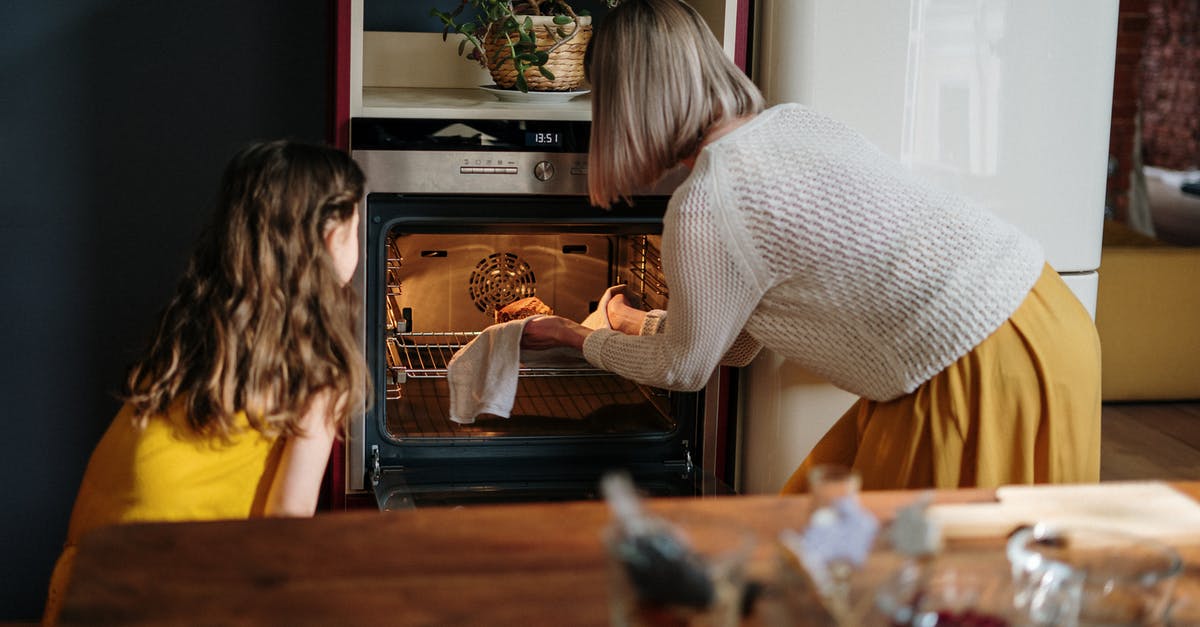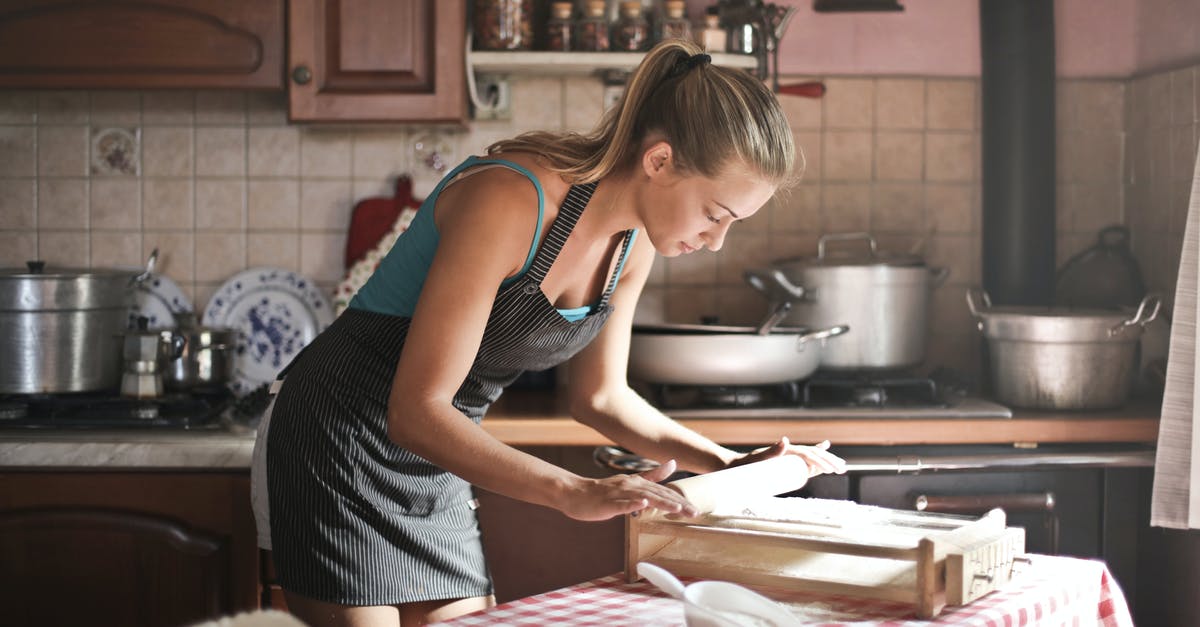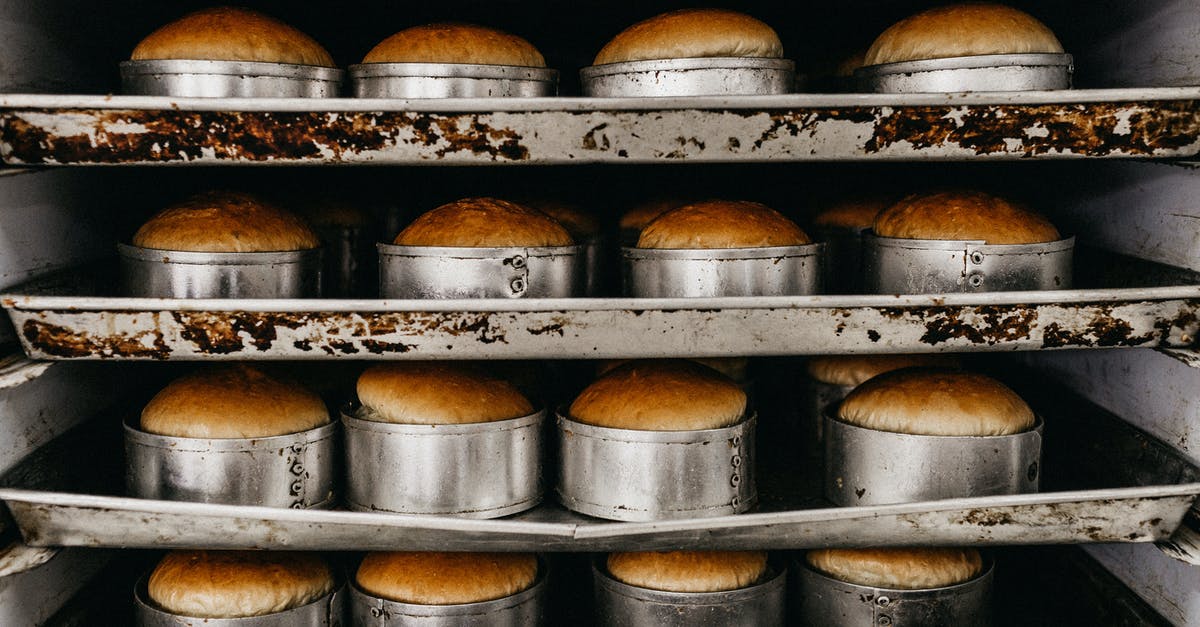Utilizing both oven racks when baking

Are there any "rules of thumb" when it comes to utilizing both racks in the oven? I'm primarily concerned when it comes to frozen meats in the oven, but I also want to utilize both racks when I bake sweets (pies, cakes, cookies, etc..).
Is this something I need to worry about? For example, does it matter where the racks are placed? I would imagine that foods placed on the lower rack would need to be taken out a bit earlier than the upper rack, because the lower rack is closer to the heating elements.
Best Answer
Bottom line
When you use both racks at once, your cooking pattern will become somewhat uneven.
Normally, you will only see this as a serious effect in thin, rapidly cooking foods like cookies. Some cookies on the tray may be browned and done, while others are still pale and underdone. This is why cookie recipes almost always specify swapping the trays between the racks, and rotating them front to back, half way through. The idea is to balance out the influence of these various affects.
For thicker and longer cooking foods like a casserole or a braise, internal conduction or convection will tend to even out the influence of the local hot and cool spots over time, making use of both racks fairly irrelevent to the outcome.
Background
Ovens transfer heat into food in two modes:
- Infrared radiation (much like a heat lamp puts out) warms the surface of the foods (or their containers) directly
- The hot air in contact with the food (or their container) conducts heat into the surface
Furtheremore, the conduction of heat into the food from the air is strongly influenced by the convection (circulation of the air due to temperature differentials). If the air were pefectly still (which it never is), then the part that is in contact with the food would soon come into thermal equilibrium with the food. As air is a very poor thermal conductor, it would then take some time for it to heat up from the adjectent air, and the food would cook very slowly.
In the real world, air also changes density when the temperature changes, becoming denser and sinking as it cools, and becoming less dense and rising when it is heated. This causes the air in the oven to circulate, even if there are no fans, and is called convection. It increases the ability of the air to transfer heat energy into the food.
There are also ovens which have fans to force air circulation, technincally called forced air convection ovens, although often simply called "convection ovens" for short.
Understanding these modes of heat transfer allow you to understand what happens when you use two racks within the oven:
Shadowing
As radiant heat is a major mode of heating, and infrared is light (just of a wavelength too long for people to see), it can be blocked and cast a shadow.
When you use only a single rack, the food (or its container) is bathed in the radiant heat from all of the walls (and floor and ceiling).
As soon as you use two racks, the food on one rack absorbs and blocks the radiant heat from at least one direction from getting to the food on the other rack.
This will cause the baking to slow down slightly, and change the pattern by which heat reaches the food.
Convection patterns
When you use more racks, the pattern of natural convection within the oven will change. Its like being in a city where the wind patterns are affected by the shape of the buildings. This can create hotter (more air going by) and colder (less air going by) spots within the oven.
If you have forced air convection (a fan), this affect is reduced but not eliminated, because the air still must circulate past the foods to actually transfer heat energy into them.
A note on on oven design
All ovens have radiant heat as a major cooking modality. The hot air from burner or heating element heats the walls of the oven, which then begin to emit infrared radiation back to the foods.
Some ovens also directly expose their heating element within the main oven cavity. In this case, infrared can be an even stronger mode, and become very directional.
This is particularly true of electric ovens with directly exposed coils. The shadowing affect becomes stronger in this type of oven.
Pictures about "Utilizing both oven racks when baking"



How do you bake with both racks?
Yes, you can! Make sure to check the wings occasionally to see if the pans need to be switched to ensure even cooking. One of the racks may get hotter than the other. You can also make sure that both of the pans are placed as close to the center of the oven as possible by adjusting the rack positions.Can you use both racks in a convection oven?
The short answer is Yes! You want your food to be in the center of the oven, which usually means the oven rack should be in the center of the oven.Does it matter what rack I put my food on in the oven?
If you prefer to bake two sheets, space racks so oven is divided into thirds and switch cookie sheets top to bottom and back to front halfway through baking. Preheat oven 10 to 15 minutes before baking the first sheet or pan of cookies. Check oven temperature with an oven thermometer.Oven Rack Placement for the Best Baking Results
Sources: Stack Exchange - This article follows the attribution requirements of Stack Exchange and is licensed under CC BY-SA 3.0.
Images: cottonbro, Andrea Piacquadio, Jonathan Borba, cottonbro
